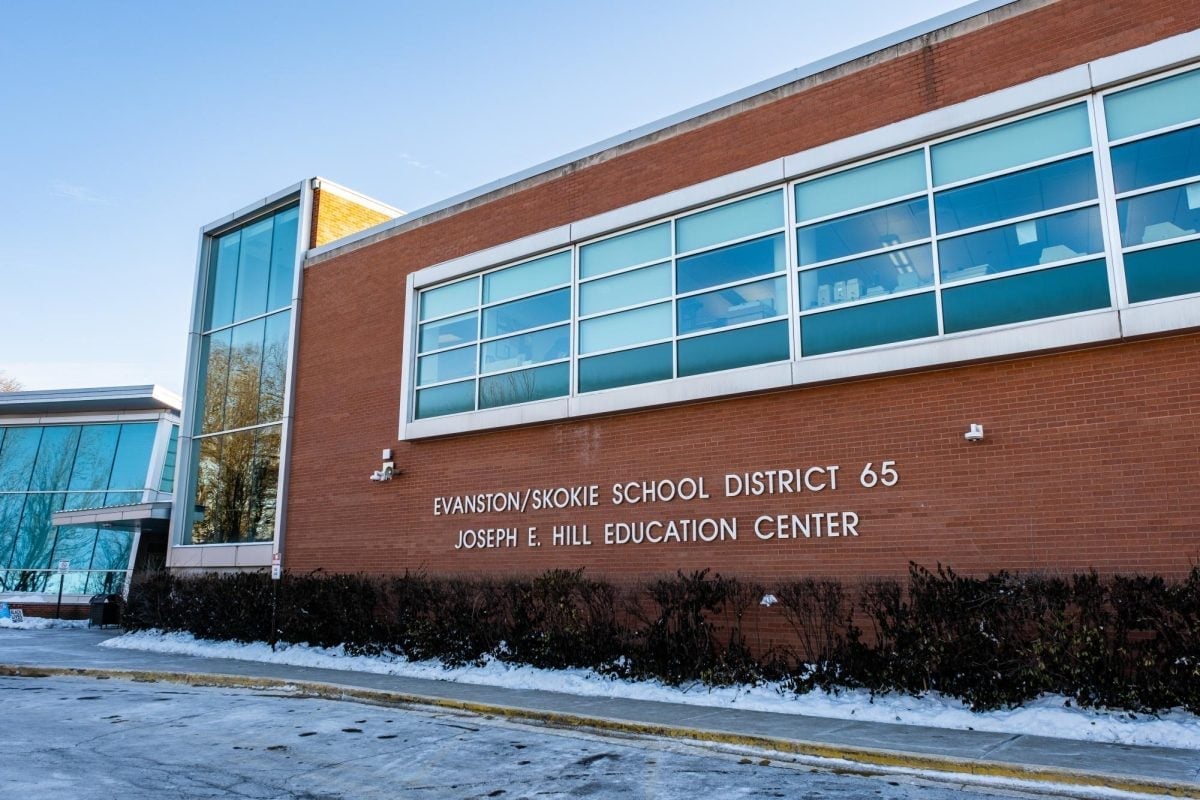The Evanston/Skokie School District 65 Board of Education heard four options for the district’s Structural Deficit Reduction Plan at its Committee of the Whole meeting Monday.
The plan started in February 2024, when the district reduced its spending by $6.5 million for fiscal year 2025. The rest of the plan is made up of three phases, which run through fiscal year 2027. Phase 1 included a hiring freeze and the development of the SDRP’s framework.
The plan is currently in Phase 2, where the board will determine its plan to cut $13.2 million — the deficit for the 2025 budget — in spending with the help of stakeholder input. The district will hold three community engagement sessions from Jan. 15 to 17. Phase 3 focuses on sustainability and avoiding a budget deficit.
Susan Harkin, a Student-Centered Services consultant for the district, presented four scenarios to reduce spending in the district and emphasized that each one was created in “the most humane way possible.”
None of the scenarios impact social-emotional learning resources, mental health resources, resources for students on individualized education programs or resources for students who are English language learners, said Superintendent Angel Turner, who held the creation of these scenarios.
“This team did a really amazing job to ensure we preserved a lot of things that I believe are the identity of Evanston,” Harkin said. “This could be a lot worse.”
With every scenario, the district would remove all bus aides except for those approved through individualized education programs or 504 plans. It would also consolidate bus routes and eliminate after-school, summer school and non-mandatory preschool routes.
District 65 would also see a 10% reduction of supplies, a 50% reduction in summer learning programs, a 5% reduction of “other objects” and the elimination of Elementary and Secondary School Emergency Relief-funded Academic Skill Centers. It also would eliminate purchased service contracts that have minimal impact on student learning.
The difference between each scenario lies in the staff positions it would cut, which determines how much of a spending reduction would be generated.
Scenario 1 eliminates 72.5 full-time equivalent positions across the district’s central office and non direct instruction staff and follows new guidelines for class size. This scenario reduces district spending by $15.2 million. Scenario 2 cuts 76 full-time equivalent positions, reducing spending by $15.6 million.
Scenario 3 decreases the number of non-direct instructors more significantly to eliminate 80.5 full-time equivalent positions and reduce spending by $16.1 million. Scenario 4 cuts 79 full-time equivalent positions, but cuts some social-emotional learning staff positions, which none of the other scenarios do, Harkin said. The scenario reduces district spending by $15.5 million.
Turner said positions were reduced based on the state’s evidence-based funding model, which determines how schools are allocated state funds. The model predicts the number of positions a school should have based on its enrollment, she said. Turner added that this shift from a “one-size-fits-all” model allows the district to personalize the needs of each school.
“Our goal is to not just do this for the sake of ‘Hey, we’re in Phase 2, and we need to do a plan,’” Turner said. “What does long-term sustainability look like in this district moving forward as we reimagine what we will look like?”
Board member Omar Salem said he would like to figure out ways to reduce costs in areas such as purchased services to retain more student-facing staff positions. Board member Donna Wang Su echoed this sentiment as she said position cuts have external impacts on educators’ families.
Board President Sergio Hernandez said preserving preschool bus routes was important for him because one of the district’s goals is to close learning gaps and District 65’s preschool programs are primarily geared toward marginalized populations.
Board member Joey Hailpern emphasized that while there are several aspects of the plans the board would rather avoid cutting, the SDRP is how the board can start “righting our wrong.”
“We have lived outside of our means,” Hailpern said. “As a board, we have not forced that situation to correct itself. It’s not coldhearted. These are people. But we have to do this. Things have to change.”
Email: anaviprakash2027@u.northwestern.edu
X: @anavi_52
Related Stories:
— Candidate removed from District 65 Board of Education ballot, 15 remain
— D65 parents, community members split over Foster School construction amid budget crisis
— District 65 Board of Education passes FY25 budget with $13 million deficit, sets cost-reduction plan







